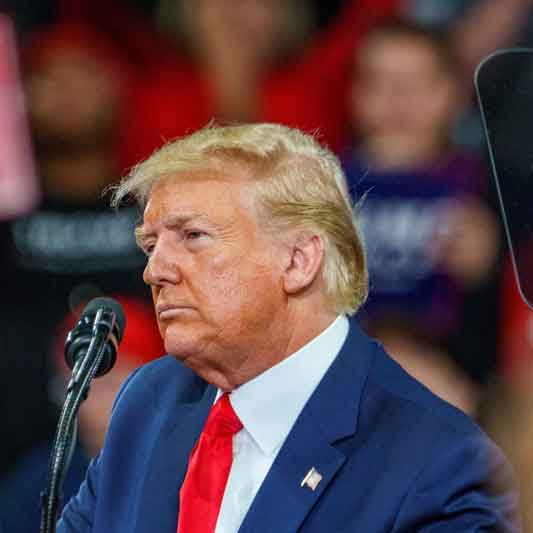During a live satellite address to the World Economic Forum in Davos, Switzerland, President Donald Trump revealed his most detailed economic strategy yet on January 23. From Washington, he outlined a comprehensive plan to address inflation, taxes, and manufacturing growth.
The conference was attended by more than 3,000 leaders from public and private sectors, including over 50 heads of state and a multitude of high-ranking government officials.
Trump made a clear declaration to businesses worldwide: “My message to every business in the world is very simple: Come make your product in America and we will give you among the lowest taxes of any nation on Earth.” He added that businesses would face tariffs if they choose to manufacture outside the United States.
Trump’s economic plan revolves around four main elements: reducing corporate tax rates from 21% to 15%, imposing tariffs on imported goods, boosting oil production, and lowering interest rates. He suggested that the proposed tariffs could generate revenue in the hundreds of billions or even trillions, which could compensate for tax cuts and promote domestic manufacturing.
The President’s strategy uses a carrot-and-stick approach to invigorate U.S. manufacturing by offering tax incentives for domestic production and imposing penalties on foreign manufacturing. The proposed tariffs would finance the tax cuts and diminish America’s national debt, according to Trump’s plan.
At the Davos gathering, JPMorgan CEO Jamie Dimon voiced support for some aspects of Trump’s strategy. He noted that Trump’s plan might be “a little inflationary,” but could potentially boost national security.
However, some economists identify potential challenges. The 2017 corporate tax cut, though it increased wages and productivity, did not compensate for revenue loss and expanded the U.S. deficit, according to an analysis from Chicago’s Booth School of Business. Furthermore, the costs of tariffs are often passed on to American consumers.
James Angel, a professor at Georgetown McDonough’s Psaros Center for Financial Markets and Policy, voiced serious concerns about Trump’s economic policies, calling them “insane.” He explained that high tariffs disrupt global trade flows – limiting imports also hampers exports, which can lead to widespread job losses.
Trump’s energy propositions also face practical obstacles. Despite record U.S. oil production, energy companies have demonstrated little interest in new drilling leases, as evidenced by a recent Alaska wildlife refuge drilling auction that received no bids. The President intends to negotiate with OPEC to increase production and lower prices while also enhancing domestic output through executive orders.
Regarding interest rates, Trump stated his intention to “demand” immediate reductions once oil prices decrease. However, the Federal Reserve has historically upheld its independence in formulating monetary policy, with previous attempts at presidential interference being firmly resisted.
The escalating U.S. deficit poses another challenge to Trump’s economic vision. To fund popular social services such as Social Security and Medicare, the United States needs to issue Treasury bonds. An increase in bond issuance typically results in lower bond prices and higher yields, which impact consumer loan rates including mortgages. Recent mortgage rate increases above 7% occurred despite Federal Reserve rate cuts, partly due to worries about government borrowing.
Mina Al-Oraibi, the Editor-in-Chief of The National, noted, “The unpredictability that Trump represents, is also the unpredictability of the world.”

